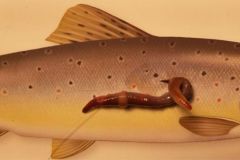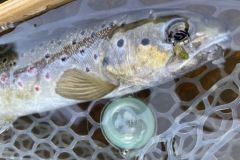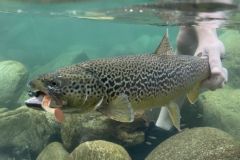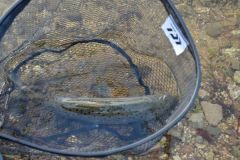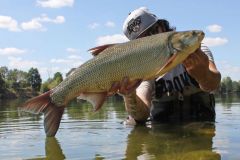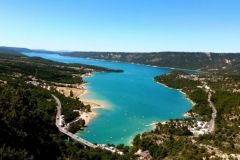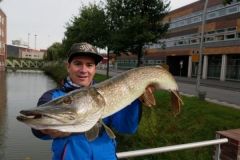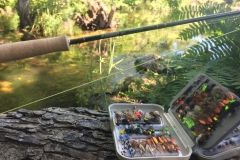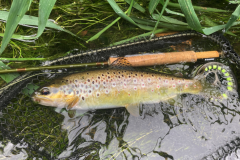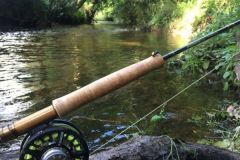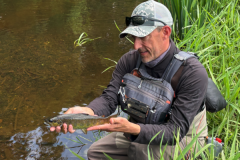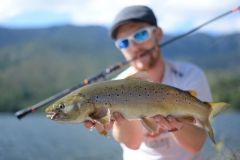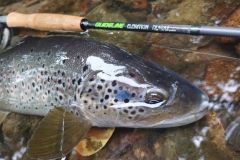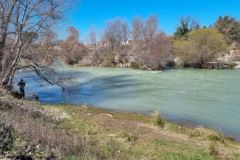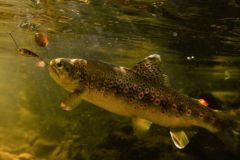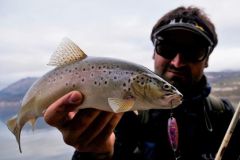This year, exceptionally, I won't be able to do the opening on Saturday, and I confess I can't remember the last time that happened to me!
For family and personal reasons, I opened on Sunday after helping out a friend in the morning. I won't arrive at the water's edge until 1:00 pm.
In any case, this time of year, I pretty much only fish between 11:00 and 16:00, as the fish often get busy during this period. And on the fly, it's the best time of the day, but I wish I'd been there earlier!
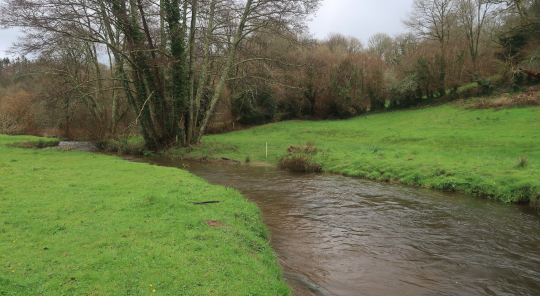
Complicated conditions for flies
It's been a long time since we've had so much water for the opening! And it's not just water. The rivers in Brittany have been in the fields for some time now, thanks to a very wet winter! For fly fishing, but I think for any technique, the levels are very tight and will make fishing complicated because the flow is so high. The trout will have to find small, less flowing areas to get out and feed without losing too much energy.
Unusual conditions, but a good omen for the rest of the season! We can't complain about too much water!
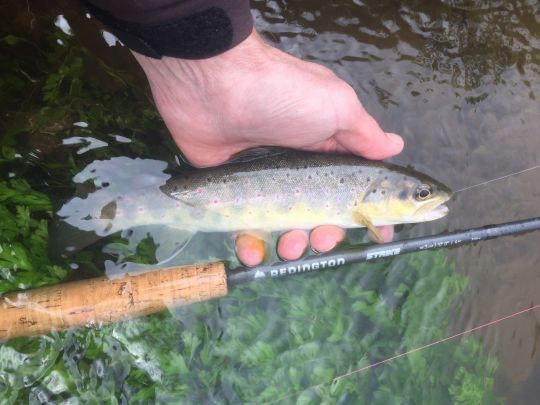
The first trout of the year. The season is launched!
So I chose a spot that I love to fish for the opening, just 5 minutes from my house. The area is clear, a little wider and has some nice baited areas where the trout like to hang out at the start of the season. It's a perfect spot for fly-fishing, and in particular for nymphing with thread (NAF), which is one of the best early-season techniques for waiting for the trout to get a bit more active.
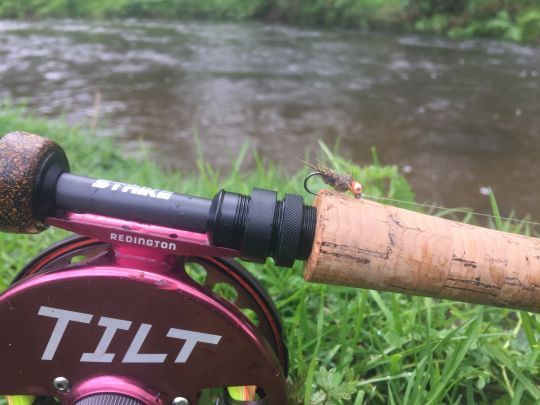
I get out of the car and eat my sandwich while scanning the water. There's no time to lose. I've wasted enough already!
The spring sun is warming my face. It's very pleasant. A few flies fly over the water, heralding fine conditions. I swallow my snack as quickly as possible, as I can't wait!
Once equipped with my waders, jackets, chest-pack, etc... I take out my walking stick when an unexpected downpour falls on my head. I take refuge in my car, as huge raindrops and above all hail fall on me! The March sleet is here! Just a little more patience...
This is going to last a good fifteen minutes and I'm afraid it's going to jeopardize my fishing trip.
Once I've finished, I quickly take out and assemble my 10-foot 3 silk rod for the NAF, and add my 15° tip and my favorite nymph to start the session. This ORL (Oreille de lièvre) nymph with an orange tag is really effective in the slightly tinted waters of the early season. I choose a 3.8 copper bead, because it grows!
Third drift, just as I'm getting to grips with my equipment and the casting of these big, well-weighted nymphs, my line jerks. A reflex strike, and the first trout of the season wriggles to the tip of the rod. Ah, it's so good to hit your first fish so quickly and, above all, to feel that sensation again at the tip of the rod. I'm delighted! She's a fighter despite her thinness. And yes, the trout haven't fed too much during this truce period, and it's time for them to regain their strength. She jumps twice, headbutts me, then I pull her towards me to take her in hand. The season is launched!
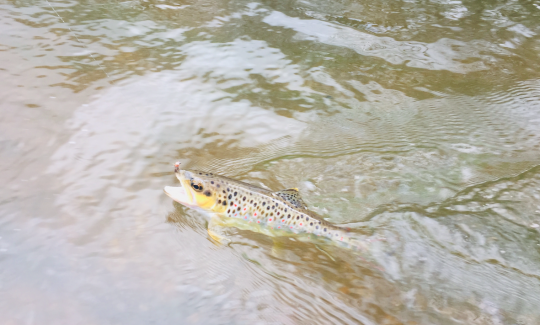
At the start of the season, it's all about finding veins that are not too fast and a little deep, where the trout like to hang out. Reading the water is fairly easy, especially at high flows. Fish the slowest from the fastest. In other words, the veins adjacent to the carrier veins. The edges of banks with a small current are also very good spots as they offer hiding places close to areas where food can be found. It is also important to test different river configurations to see which positions are most interesting. The same applies to flies, unless you already know your sectors and the effectiveness of certain flies.
I continue and a few casts later, yet another trout intercepts my ENT nymph. The taps are straightforward and you can tell they need to feed in these high, cold waters. They need to regain their health. The waters are a bit prickly, but so far so good. I'm going to string the trout together and get 6 out in less than an hour. Every touch is clean and I can see my indicator moving, or slowing down in the current. The reflex hooks are still there and I'm gradually getting more comfortable casting tungsten nymphs. Accuracy and drift are improving with each cast.
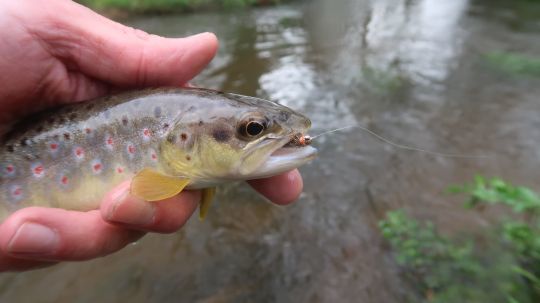
Rising waters and the end of the fishing trip!
Just as I was feeling comfortable and happy to get back to the trout fishing I love so much, the waters began to rise and turn color! A few days earlier, I had rigged up several streamers for line fishing. I hasten to set one up, as the water is bound to get too dirty. The activity seems to be calming down, and I only get two hits on my streamer jig. Two impossible shots!
The waters are now far too dirty to hope for a few trout on the fly. I'm disappointed, as I had planned my afternoon to see different areas to fish, but also to go and find out if storm Ciaran hasn't done too much damage to my fishing and guiding spots. In Brittany, we were very hard hit by this event, which downed a very large number of trees and branches. Each AAPPMA has carried out a survey of the trees that need to be removed, not only for the sake of fishing and halieutics, but also for the safety of anglers and for hydraulic reasons. A colossal amount of work will have to be done by anglers and local authorities to restore our rivers and countryside. It's likely to take several years, given the extent of the damage!
Don't hesitate to contact your AAPPMA if you'd like to lend a hand with river maintenance or other projects. We're all members of associations, and it's important to help each other out, rather than simply consuming our hobby selfishly. Please think about it.






